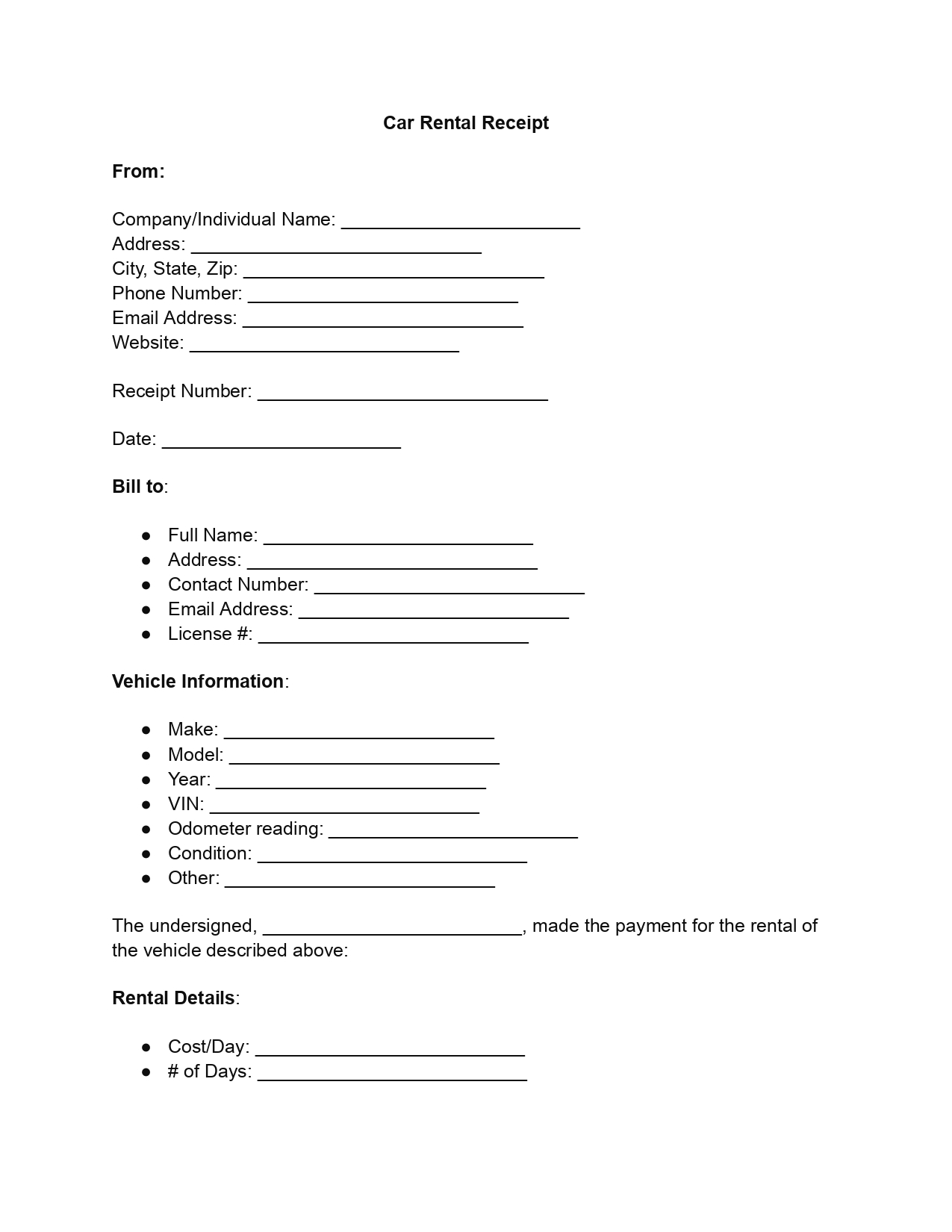Today, car rentals become a cornerstone of convenience for travelers and locals alike, facilitating mobility with ease and flexibility. Yet, amidst the excitement of hitting the road, the significance of a car rental receipt often gets overlooked. This document is a clear agreement between the rental service and the customer. The car rental invoice outlines the financial aspects of the rent, as well as the expectations and responsibilities of all parties involved.
Importance of Rental Car Receipts
A rental car invoice ensures a smooth and clear transaction between rental services and their clients. Their importance is rooted in three main aspects:
- These documents detail every cost associated with the rental, from daily rates to extra charges, ensuring the service provider and the customer are financially on the same page.
- When there’s a disagreement or confusion over the rental terms, the receipt serves as official evidence of the agreement made.
- Car rental bills are critical for businesses to manage their financial records and adhere to tax laws, as well as for customers to track their expenses for reimbursement or tax purposes.
Using car rental receipts, rental companies, and customers ensure their transactions are transparent, legally sound, and accurately documented. This approach promotes mutual confidence while simplifying financial and legal processes, making it a crucial practice in car rental.
What’s very convenient is that you don’t have to create the document yourself from scratch. Using a car rental receipt template is wise for rental companies and clients. It standardizes transaction documentation, improving efficiency and reducing errors. The car rental invoice template ensures that all relevant details, such as costs, rental time, and customer information, are compiled consistently throughout all transactions. This standardization helps to eliminate misconceptions about costs and services.
How to Edit Rental Car Invoice Templates?
Following this simple step-by-step guide, you can easily fill out the car rental receipt in our PDF editor.
1. Fill in Company or Individual Information
Start by entering the name of the rental company or individual renting out the vehicle in the “Company/Individual Name” section. Follow this by detailing the address, including city, state, and zip code. Add contact information such as phone number, email address, and, if applicable, the website. This section sets the foundation for the receipt by identifying the issuer.
2. Complete the Receipt and Date Section
Input the receipt number (a unique identifier for the transaction) and specify the date the receipt is issued. This step is crucial for record-keeping and future references.
3. Input Bill To Information
Here, write down the full name of the customer renting the car. Include the customer’s address, contact number, email address, and license number. This section is vital for identifying the renter and any necessary future contact.
4. Provide Vehicle Information
Detail the rented vehicle’s make, model, year, and Vehicle Identification Number (VIN). Add the odometer reading at the start of the rental period and describe the vehicle’s condition. If there are any other relevant details about the vehicle, note them in the “Other” field.
5. Document Rental Details
Specify the rental cost per day and the number of days the vehicle is rented for, and calculate the subtotal. Enter the applicable tax rate, compute the total tax, and then the total amount due for the rental period.
6. Fill Out Payment Information
Indicate the payment method the customer uses (e.g., credit card, cash, check) and include the transaction ID or check number if applicable. This information is essential for tracking payments and ensuring transparency.
7. Sign and Date
The final step involves the renter acknowledging receipt of the vehicle and agreeing to the stated terms and conditions by signing and dating the document. The authorized signature from the rental company or individual representative is also required.
